
Perennial Forbs Around Las Vegas, Vegetation Around Las Vegas
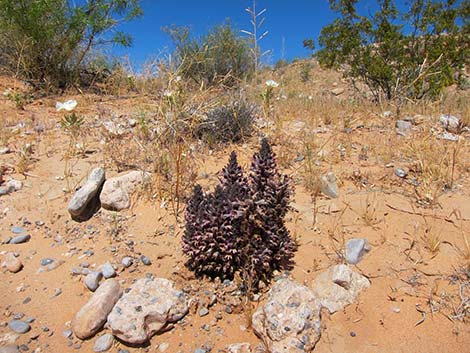 |
General: Desert Broom-rape (Orobanche cooperi) is a parasitic plant that has no chlorophyll. Broom-rapes attach to the roots of other plants and sucks sugars and nutrients from them. Desert Broom-rape usually has a single, short above-ground stalk, from which flowers emerge. The stem and the flowers are purplish. Desert Broom-rape is an uncommon component of vegetation communities in dry, well-drained sandy and gravelly areas on desert flats, bajadas, and moderate slopes in the Lower Sonoran (Creosote-Bursage Flats) and Upper Sonoran (Mojave Desert Scrub) life zones. Family: Broom-rape (Orobanchaceae). Other Names: Plant Form: Short, stout stalk emerging from the ground. Height: Usually 5-6 inches, to about 20 inches. |
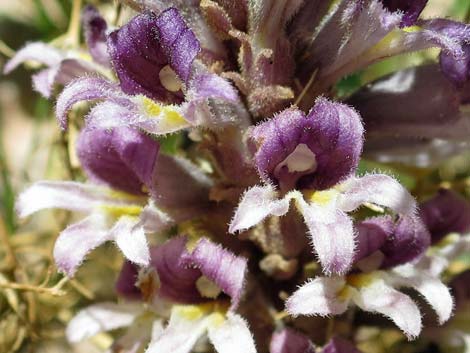 |
Stems: Stout stalk, usually single. Leaves: None. Flowers: Tubular, asymmetrical with three lobes down and two up. Throat yellow, lobes purplish. Seeds: Habitat: Desert flats and bajadas, muddy and sandy areas. Elevation: To about 2,500 feet. Distribution: Southwestern deserts. Comments: |
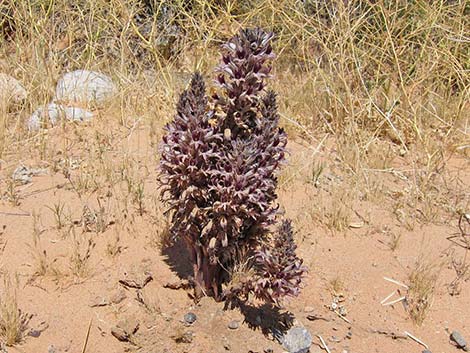 |
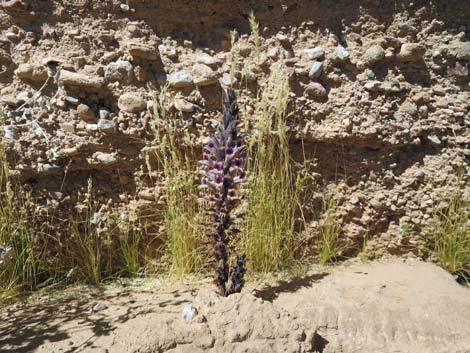 |
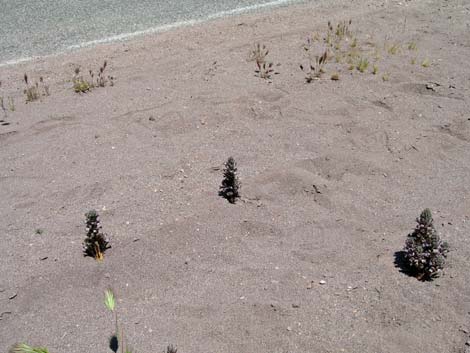 Desert Broom-rape roadside habitat |
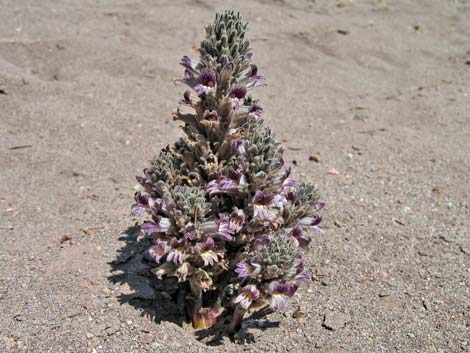 Desert Broom-rape in sandy soil |
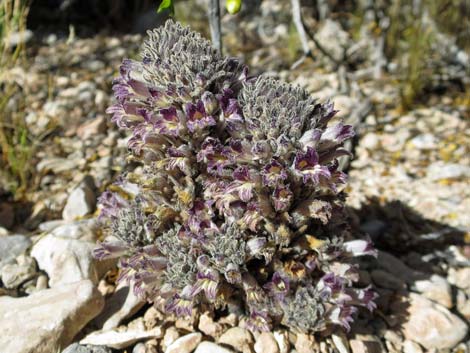 |
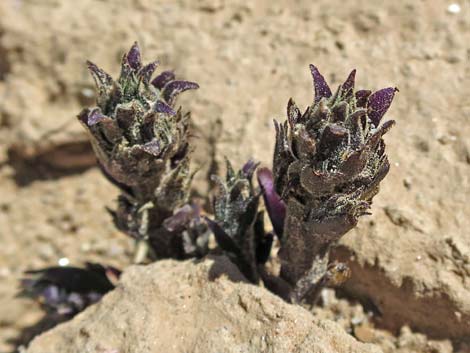 |
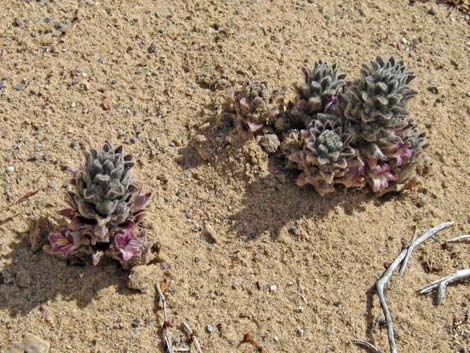 |
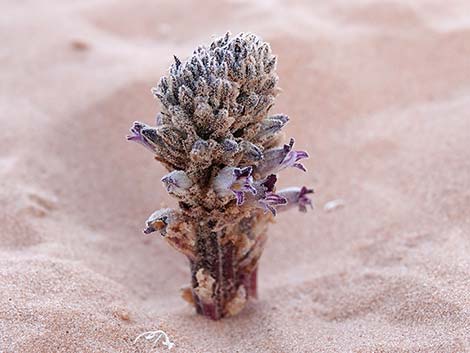 |
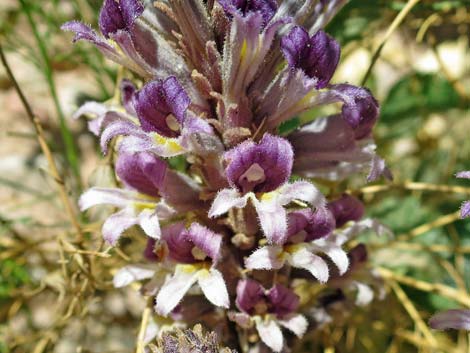 |
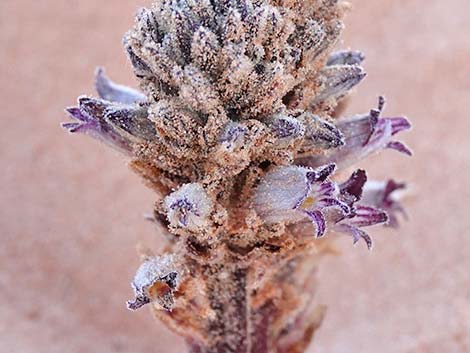 |
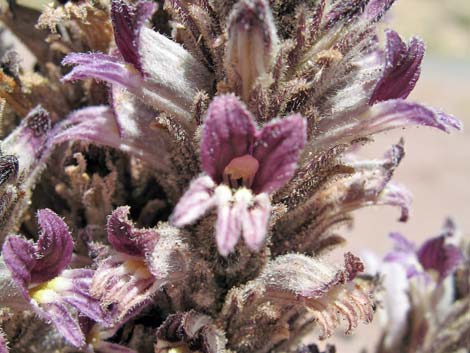 |
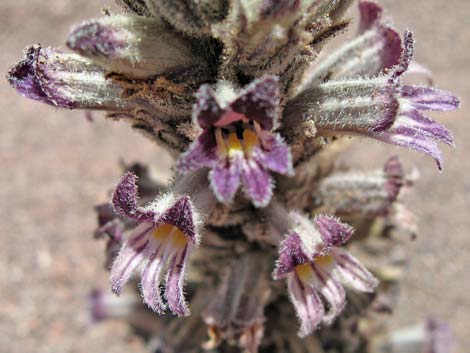 |
Note: All distances, elevations, and other facts are approximate. Names generally follow the USDA database.
![]() ; Last updated 240908
; Last updated 240908
| All Perennial Forbs | Plant Species Index | Glossary | Copyright, Conditions, Disclaimer | Home |